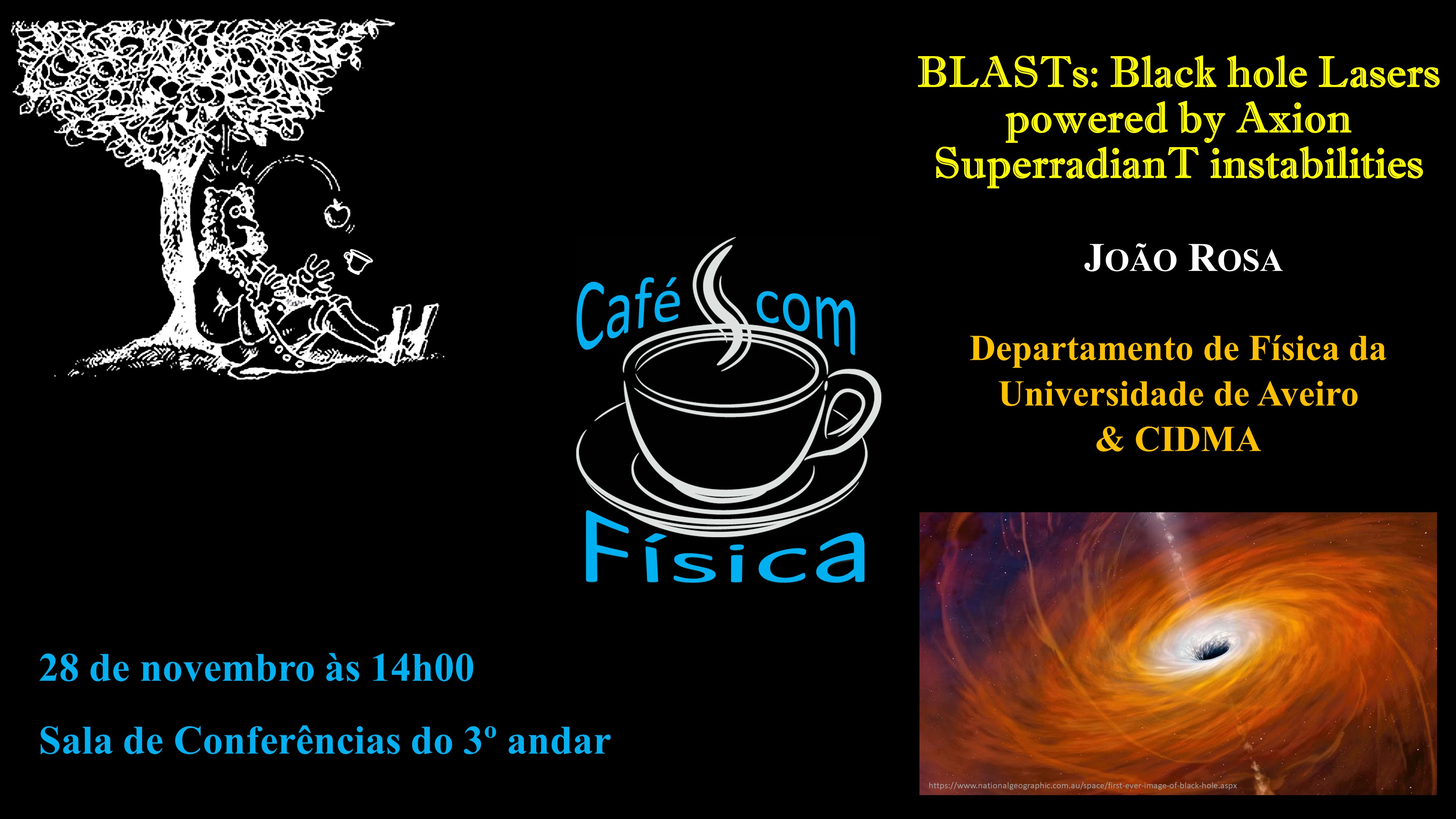BLASTs: Black hole Lasers powered by Axion SuperradianT instabilities
by
Sala de Conferências
Departamento de Física

I will discuss how the superradiant instability of rotating black holes can produce dense axion clouds in their vicinity, and how stimulated axion decay into photon pairs can then lead to extremely powerful lasers. I will show, in particular, that the lasing threshold can be attained for axions with mass above 10^-8 eV forming superradiant clouds around spinning primordial black holes of sub-solar masses. Lasing is quenched by Schwinger pair production and the consequent formation of a critical electron-positron plasma, generating lasing bursts that can repeat once the plasma density becomes sub-critical after electron-positron annihilation. Interestingly, for 10^-5 eV axions, which may account for the majority of dark matter in the Universe, this leads to millisecond bursts in the GHz radio-frequency range, with peak luminosities around 10^42 erg/s, suggesting a possible link to the observed fast radio bursts.
(based on arXiv:1709.06581 with Thomas W. Kephart)
Filipe Veloso e Pedro Costa